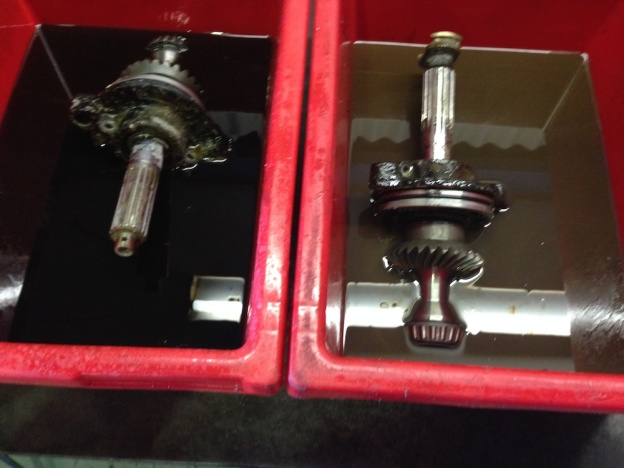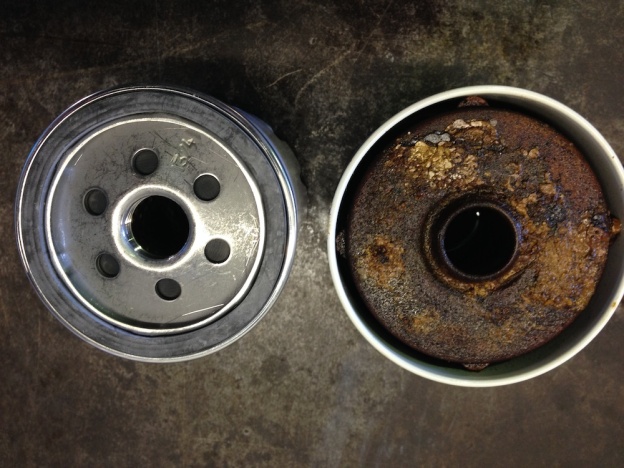It is often a rush to get the boat ready for a long-weekend or holiday and the last thing you want to have to deal with are problems that have developed while it has been sitting vacant. To avoid problems when you least need them we recommend building in a regular regime of checks and maintenance for your beloved boat. Here are 12 tickle-ups that we know your boat will love you for!
Tickle-up 1 – Check your fuel condition and status
How old is your fuel? When did you last buy it? If it’s more than 3-months old it’s probably going stale in a petrol engine or growing bacteria in a diesel engine. Another indication of fuel contamination is if your boat is suffering performance issues.
First thing to do is to check the fuel filters. With a diesel engine you can do this yourself. Diesel engines have a primary filter with a clear bowl and you can see if there is any bacteria or contaminants. Diesel should be a clear to an amber colour. If you can see black sludge there is probably bacteria in the fuel, particularly if your boat is in a warmer climate during summer, when bacteria grows very quickly. If the colour is a yellow, green or blue colour it is probably contaminated.
If it is a petrol engine you will need a specialised mechanic to remove the filter and check for contaminants as there are no glass bowls for visual inspection and as petrol is highly flammable and there is a safety process to follow. So if your boat hasn’t been used for 6 months or you are having performance issues call us to check the petrol for you.
If you find your fuel is contaminated, it will need to be treated. We can help by adding a special fuel treatment to the fuel and get you on the water fast.
Tip 1 – keep your fuel level low. Don’t keep it topped up all the time. Particularly with petrol engines, as unleaded fuel goes off very quickly. In the old days leaded fuel use to last a long time.
Tip 2 – Put fresh fuel in as soon as using boat. If it has been longer than 6 months since you used your boat, or you are having performance issues call us to check your petrol before any major boating.
Tip 3 –Regularly starting your boat, say once every 2-4 weeks as a minimum, will help.
Tickle-up 2 – Check your anchor and anchor winch is operational.
If you do break down on the water your anchor and anchor winch are essential to prevent you drifting into a dangerous situation.
Tickle-up 3 – Regularly wash your boat
I know this doesn’t sound like the kind of thing a mechanic would recommend but we see a lot of lovely boats with faded and brittle fibreglass and damaged vinyl seat covers. Regularly washing your boat with a good car or truck washing product will protect the fibreglass, keeping it in good condition so it won’t fade as quickly and also stops acid rain from reeking havoc on your polish job. Add a vinyl protector to all the vinyl coverings to protect them against sun and salt exposure and slow the brittling process.
Tickle-up 4 – Check your bilge area
Check your bilge area for sitting water, traces of oil or fuel. If you find water, oil or fuel locate and fix the leaks. Also check your bilge pump to make sure it is operating properly. You shouldn’t have any water, oil or fuel sitting in the bilge area.
Tickle-up 5 – Regular start-ups
Regularly start your boat engine every 2-4 weeks. Start both engines and put it into gear for a couple of minutes to help keep the props and drive train clean. Don’t forget to start-up the genset and run it for 10 to 15 minutes. Check all the gauges are working on the dashboard, such as warning lights, warning buzzers, oil pressure and temperature gauge. Make sure the warning buzzer is operating when you turn your ignitions on.
Tickle-up 6 – Check condition of mooring lines
Your mooring lines should always have the right tension on them because you never know when a storm or floodwaters will hit. Make sure they are at the correct tension to prevent your boat from being tossed around. Also make sure the conditions of the mooring lines are sound. Look for frays and brittleness. The condition of your mooring lines is one of your best defences against storm and flood damage.
Tickle-up 7 – Check for loose connections
Check for loose connections by:
- Turning on all your boat lighting checking they are working including navigation and anchor lights.
- Turning on the water pumps and making sure they are working to bring freshwater on-board your boat.
- Turning on your hot-water heater for 15-20 minutes to make sure it is heating.
Tickle-up 8 – Check your fluid levels
Check fluid levels of engine oils, gensets and gearboxes. If you have a closed cooling system check the level of your coolant in your engine and genset.
Tickle-up 9 – Check your belt tensions
When checking your belt tensions make sure there is no more than half to ¾ of an inch of play. Anymore than that and it is too loose. This can depend a little on the length of your belt, so if you are not sure call us to confirm.
Tickle-up 10 – Check your battery connections
Visually check the battery connections. If they are dirty or there is a calcium build up cleaning off with a CRC or Inox or similar type of battery terminal cleaner and wipe away the residue. Don’t try using boiling water as this will just put calcium into your bilge.
Tickle-up 11 – Service your sail drives every 12 months
Sail drives need servicing every 12 months, which is best carried out with your annual antifoul and maintenance out of the water.
Below is an image of the two prop shafts from a Lightwave 38ft catamaran, which had water in the oil (see the milky nature of the tub on the right in the image). Water was ingressing through the lower prop shaft seals that had deteriorated. This can result in the need to purchase a new gearbox and at worse failure of the sail drive leaving you stranded at sea!

Tickle-up 12 – Service your engine and genset every 12 months
Your engine and genset need to be serviced every 12-months, whether you use your boat or not.
In the image below you can see a fuel filter from a boat that hadn’t been serviced regularly. Fuel tanks create condensation and moisture, which is filtered by the fuel filter. If the fuel filter isn’t changed every 12-months it ends up like this one. A poor fuel filter can lead to costly repairs to pumps and injectors, worse case scenario it can result in your engine stopping leaving you stranded at sea.




